A multi-stem cell basis for craniosynostosis and calvarial mineralization
- PMID: 37730988
- PMCID: PMC10799660
- DOI: 10.1038/s41586-023-06526-2
A multi-stem cell basis for craniosynostosis and calvarial mineralization
Abstract
Craniosynostosis is a group of disorders of premature calvarial suture fusion. The identity of the calvarial stem cells (CSCs) that produce fusion-driving osteoblasts in craniosynostosis remains poorly understood. Here we show that both physiologic calvarial mineralization and pathologic calvarial fusion in craniosynostosis reflect the interaction of two separate stem cell lineages; a previously identified cathepsin K (CTSK) lineage CSC1 (CTSK+ CSC) and a separate discoidin domain-containing receptor 2 (DDR2) lineage stem cell (DDR2+ CSC) that we identified in this study. Deletion of Twist1, a gene associated with craniosynostosis in humans2,3, solely in CTSK+ CSCs is sufficient to drive craniosynostosis in mice, but the sites that are destined to fuse exhibit an unexpected depletion of CTSK+ CSCs and a corresponding expansion of DDR2+ CSCs, with DDR2+ CSC expansion being a direct maladaptive response to CTSK+ CSC depletion. DDR2+ CSCs display full stemness features, and our results establish the presence of two distinct stem cell lineages in the sutures, with both populations contributing to physiologic calvarial mineralization. DDR2+ CSCs mediate a distinct form of endochondral ossification without the typical haematopoietic marrow formation. Implantation of DDR2+ CSCs into suture sites is sufficient to induce fusion, and this phenotype was prevented by co-transplantation of CTSK+ CSCs. Finally, the human counterparts of DDR2+ CSCs and CTSK+ CSCs display conserved functional properties in xenograft assays. The interaction between these two stem cell populations provides a new biologic interface for the modulation of calvarial mineralization and suture patency.
© 2023. The Author(s), under exclusive licence to Springer Nature Limited.
Conflict of interest statement
Figures
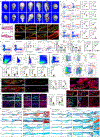


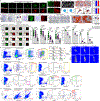
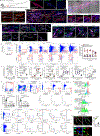
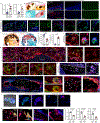
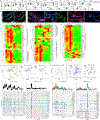


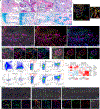
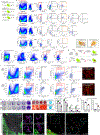






Comment in
-
Dual stem-cell populations interact in the skull.Nature. 2023 Sep;621(7980):698-699. doi: 10.1038/d41586-023-02547-z. Nature. 2023. PMID: 37730770 No abstract available.
References
Main references
-
- Howard TD et al. Mutations in TWIST, a basic helix–loop–helix transcription factor, in Saethre-Chotzen syndrome. Nat. Genet. 15, 36–41 (1997). - PubMed
-
- Ghouzzi V El et al. Mutations of the TWIST gene in the Saethre-Chotzene syndrome. Nat. Genet. 15, 42–46 (1997). - PubMed
-
- Carver EA, Oram KF & Gridley T Craniosynostosis inTwist heterozygous mice: A model for Saethre-Chotzen syndrome. Anat. Rec. 268, 90–92 (2002). - PubMed
Additional references
-
- Nakamura T et al. Estrogen Prevents Bone Loss via Estrogen Receptor α and Induction of Fas Ligand in Osteoclasts. Cell 130, 811–823 (2007). - PubMed
-
- Chen Y-T, Akinwunmi PO, Deng JM, Tam OH & Behringer RR Generation of aTwist1 conditional null allele in the mouse. genesis 45, 588–592 (2007). - PubMed
-
- Nakashima K et al. The Novel Zinc Finger-Containing Transcription Factor Osterix Is Required for Osteoblast Differentiation and Bone Formation. Cell 108, 17–29 (2002). - PubMed

